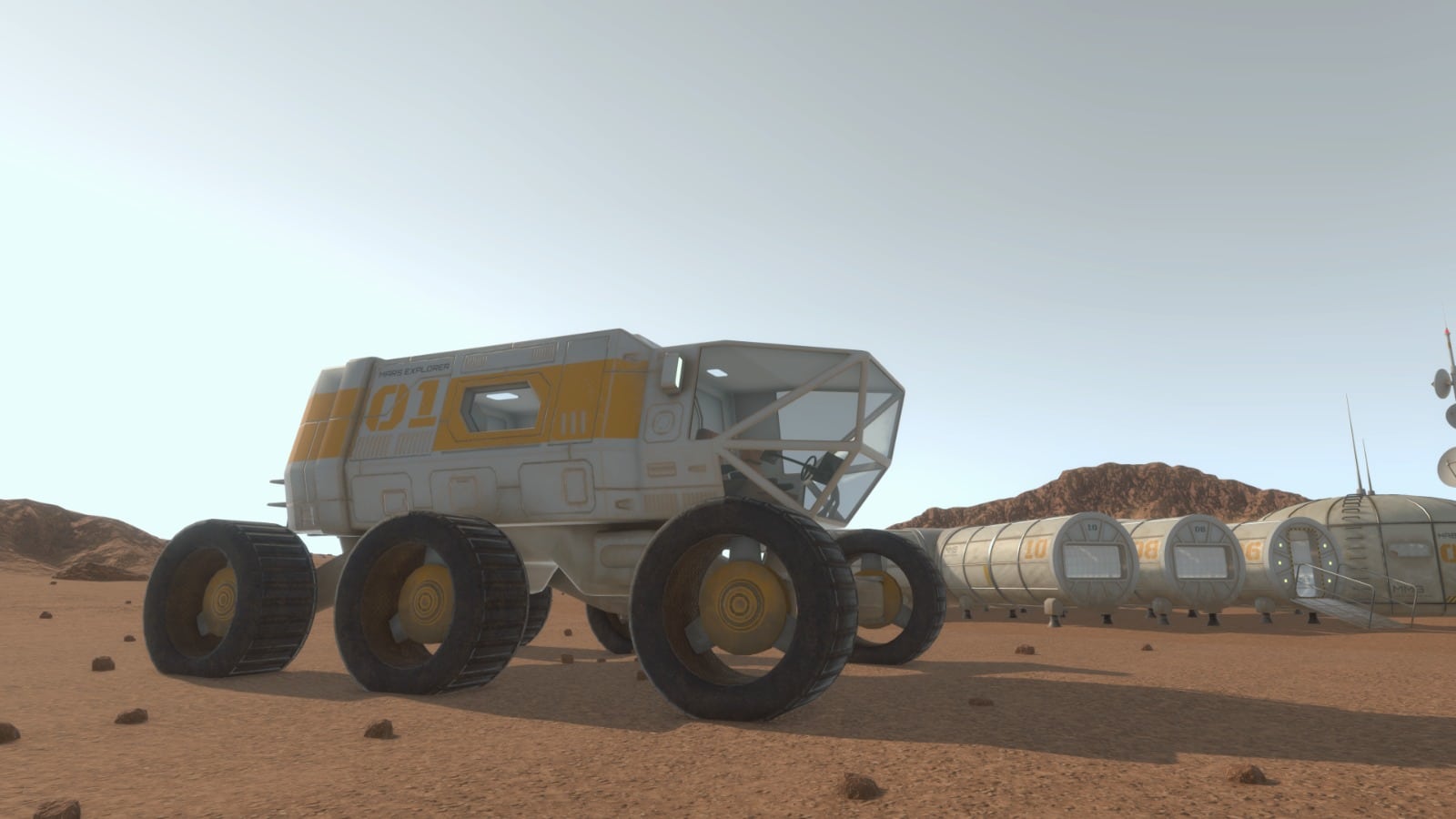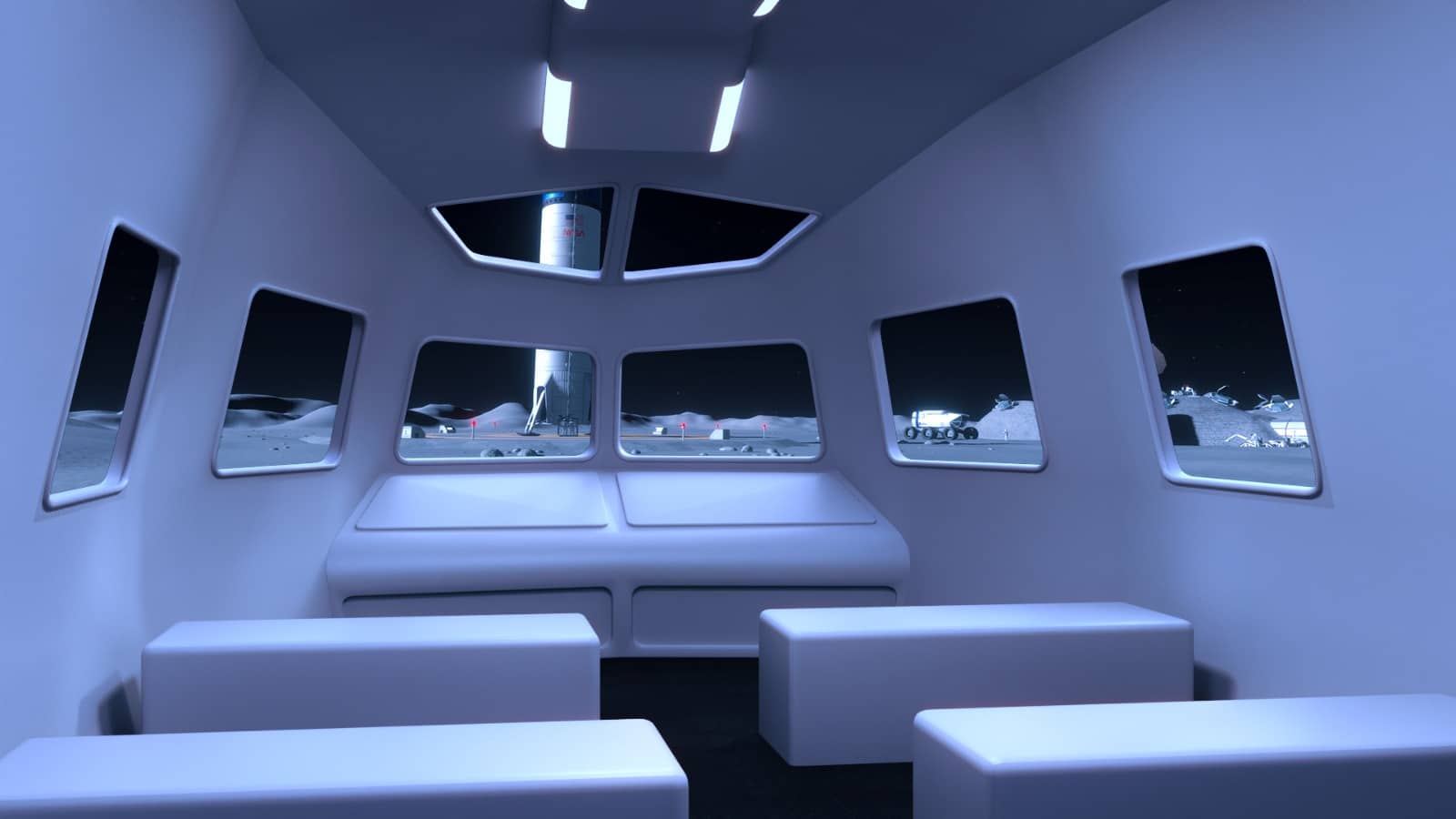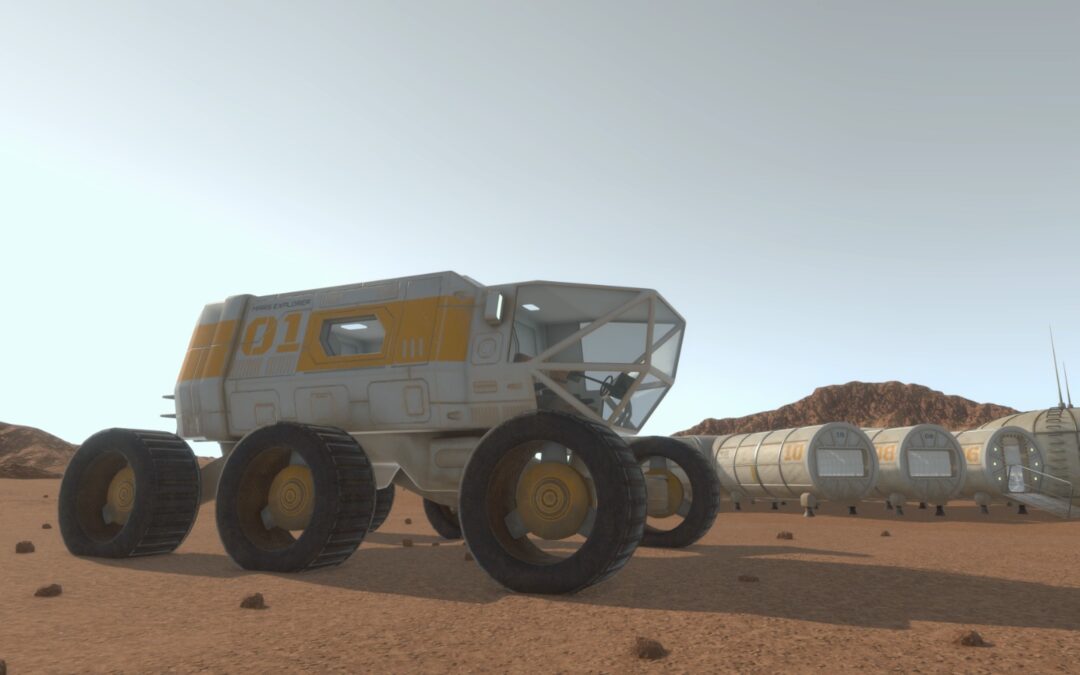At SpaceRobotics.EU, we have developed advanced rover models for simulation, focused on enhancing the experience of astronauts during missions to the Moon and Mars. These 3D models are designed with a high level of detail, allowing for their integration into virtual reality (VR) and augmented reality (AR) environments. Thanks to the accuracy of these models, we can simulate terrain, weather conditions, and rover functionalities precisely, offering users a fully immersive experience.
The use of virtual reality in our simulations allows astronaut teams, engineers, and scientists to interact with the rovers and experience extreme situations safely before facing the real conditions of space. The models enable control, navigation, and decision-making tests within simulation environments that faithfully replicate the lunar or Martian surface.
On the other hand, augmented reality provides an additional layer of real-time information about the environment and rover tools. Using AR glasses or portable devices, operators can receive instructions, data, and analysis on rover performance, allowing them to make informed decisions without disconnecting from the physical environment.
These technological innovations are essential for training future astronauts and improving the efficiency of space missions. By integrating these models into VR and AR platforms, operators can experiment with different configurations, terrain tests, and maneuvers without needing to be physically in space, optimizing exploration strategies.

The Artemis Mission: Humanity’s Return to the Moon
Starting in 2026, NASA will embark on its most ambitious mission in decades: the Artemis mission. The primary goal of Artemis is to establish a sustainable human presence on the Moon, in order to study its geology, explore resources, and test technologies that will be crucial for future missions to Mars. This mission not only marks humanity’s return to the Moon but opens the door to a new era of space exploration.
Artemis aims to send the first woman and the next man to the Moon using the Orion Spacecraft and the Space Launch System (SLS). The Artemis program is based on the creation of a space station in lunar orbit, called Gateway, which will serve as a platform for landing on the Moon and future explorations. Additionally, the long-term goal is to lay the groundwork for the exploration of Mars, a far greater challenge in terms of distance, resources, and sustainability.
The rovers we are developing at SpaceRobotics.EU play a key role in this process. Exploring the lunar and Martian surfaces will be vital to the Artemis mission, as the rovers will be responsible for tasks such as sample collection, terrain exploration, and the search for resources like water. Moreover, these rovers will need to operate in extreme conditions, with extremely low temperatures and without the protection that Earth’s atmosphere provides.
Thus, our 3D rover simulations for VR and AR are essential tools in training astronauts and testing equipment before it is launched into space. Thanks to these technologies, different scenarios can be simulated, and astronauts’ skills can be enhanced for missions as demanding as those proposed by Artemis.

The Physical Simulator: A Unique Tool in Spain
As part of our commitment to innovation, we are developing a unique physical simulator in Spain for the training and testing of rovers designed for lunar and Martian missions. This simulator will become an indispensable tool for astronaut training and the validation of exploration systems.
The simulator will feature a 6-square-meter space and more than 6 screens, allowing users to control and manage the rovers in a completely realistic environment. The immersion will be total, thanks to the strategic arrangement of the screens and the integration of cutting-edge technology that will accurately replicate the navigation and operation of rovers on the lunar and Martian surfaces. Operators will be able to interact intuitively with the simulator, managing rover controls, observing terrain, and adjusting parameters in real-time—all within a virtual environment that mimics the conditions astronauts will face.
This simulator will be the first of its kind in Spain and will provide invaluable value for team training and mission preparation. Its ability to replicate different terrain conditions and complex scenarios will allow astronauts to practice maneuvers, reactions to unforeseen events, and exploration strategies, all while being fully immersed in a controlled and safe environment.
The simulator will not only be used by astronauts in training but also by engineers and scientists working on the improvement and development of the rovers and other systems related to space missions. The ability to test and perfect technology before it is sent into space will be crucial to ensuring the success of future missions, such as Artemis, and will contribute to technological advances in the exploration of other planets.


